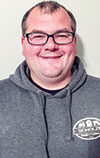When my brother and I returned to the farm from our off-the-farm experience, we knew that in order to allow the farm to support three families instead of one, we needed to make some changes.
Part of our process was to look at the processes that were currently in place and see what could be improved to help us be more profitable. Obviously we wanted to pick the low-hanging fruit that would give us the fastest return on investment.
We had a very high producing herd with excellent components, but as I dug into the numbers, I noticed that while our herd was better than average in all aspects, our first lactation animals were performing at a rate of 25-30 percent lower than mature cows, and a higher than ideal percentage were leaving at or during lactation one. The more I looked, the more I became convinced that our calf and heifer raising program was the reason these animals were struggling in their first lactation.
We had a pretty good plan in place for our wet calves, a good vaccination and feeding protocol. We raised calves in super hutches in groups of four, feeding with a milk bar bucket. I did some research and changed what brand of starter and milk replacer we used and noticed increased intake, which led to slight improvement in daily weight gain – not drastic but every little bit helps.
I felt our biggest problem was in our post-weaned calves. At the time, they were group housed and fed free-choice grain and hay. However, there was no protocol in place for how much grain nor when they were vaccinated or moved into the next group of animals, pre-breeding.
So working with our nutritionist and veterinarian, I went to work to redesign how we raised our 3- to 6-month-old calves to maximize growth and minimize health risk. The first decision we made was to continue to house them outside in a dirt-grass lot. Due to where we are in our dairy setup, we didn't feel that we wanted to invest in a calf barn as we are seriously looking at a different site for an upgraded dairy, which would change how we raise calves again.
The next choice I made was that I wanted them to be raised in smaller groups (12 to 14) that were closer in age. I did this because I felt that in the group setting, the older calves were eating more than their fair share of grain and younger calves weren't getting enough. I could now measure the amount of grain that the calves were consuming and tailor it to their needs. I am very conscious to make sure that there are never more than 10 days between oldest and youngest in a group. I've found this makes for much better growth rates by all.
Another thing this allowed me to do was to build more size appropriate housing for the small groups. This made it easier to keep calves warm and dry, reducing pneumonia incidence and leading to better growth rates and fewer culled animals for respiratory issues.
One other change I made was that I now record all information that I can about my calves, even if it seems mundane (scours, etc.), which gives me more information that can help me make more informed decisions about my animals as they age.
It has been two and a half years since we have implemented these changes in our calf raising programs, and the improvements in the performance of our first calf heifers shows them to be well worth it. The first thing we noticed was there seemed to be a drop in pneumonia cases; however, due to the fact that we never recorded cases, I cannot put a number to that.
The second effect we noticed was increased weight gain, leading us to be able to breed heifers two months younger than what we had been doing. Finally from a production standpoint, we have seen a 15-percent increase in fluid milk production, while seeing a 5- to 10-percent increase in fat and protein. Another positive that I didn't think to measure and record before we made the changes was a seemingly large decrease in calving issues in our first-calf heifers. The only measurable difference I have noticed is a 10-percent decrease in first-calf heifers being culled from the herd.
In conclusion, in my few short years back on the farm, I am fully confident that one of the most important changes any dairy can make is to be very mindful of the first six months of our calves' lives. In that time frame, we are setting them up for success or failure. It doesn't matter what their genetic potential is if we error in raising them. If we don't provide a good growing environment, we will never utilize their full potential. PD
Theo Scholze is a dairy producer in Humbird, Wisconsin. He and his brother, Will, write a blog called Wisconsin Dairy Farmer. You can also connect with Theo on our Proud to Dairy network.






